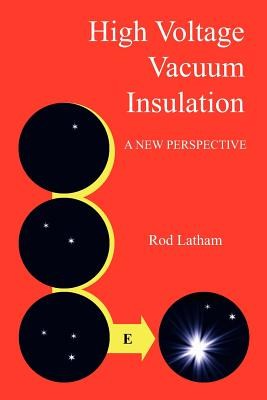
- We will send in 10–14 business days.
- Author: Rod Latham
- Publisher: AuthorHouse UK
- ISBN-10: 1425948618
- ISBN-13: 9781425948610
- Format: 15.2 x 22.9 x 0.7 cm, softcover
- Language: English
- SAVE -10% with code: EXTRA
Reviews
Description
This short monograph is a sequel to the author's previous two reference books on the subject of High Voltage Vacuum Insulation, and will be of interest to all of those involved in both fundamental research and the technological development of practical high voltage devices. Its aim is to offer an improved understanding of the operational behaviour of the high voltage vacuum gap, with particular reference to the physical origin of the prebreakdown current-voltage characteristic, and the subsequent breakdown mechanism. It introduces a range of new insights into the fundamental physical processes that operate in an "open" vacuum gap, i.e. one that is not bridged by a solid insulator, and suggests a number of diagnostic techniques that could be used to investigate these processes. In particular, it highlights the important role played by the anode which, hitherto, has conventionally been seen as a relatively passive partner in the vacuum gap. A chapter has also been devoted to a discussion of the primary, particulate-based, field-induced electron emission mechanism which is widely believed to be the precursor of gap breakdown. Finally, consideration is given as to how these new insights might influence existing technological practice, and lead to new innovative approaches for improving the insulating performance of a vacuum gap. The book has drawn extensively on the material contained in the author's 1995 book "High Voltage Vacuum Insulation: Basic Concepts and Technological Practice", and has been written in a conceptual style that makes it comprehensive to a newcomer to the field.
EXTRA 10 % discount with code: EXTRA
The promotion ends in 18d.14:54:48
The discount code is valid when purchasing from 10 €. Discounts do not stack.
- Author: Rod Latham
- Publisher: AuthorHouse UK
- ISBN-10: 1425948618
- ISBN-13: 9781425948610
- Format: 15.2 x 22.9 x 0.7 cm, softcover
- Language: English English
This short monograph is a sequel to the author's previous two reference books on the subject of High Voltage Vacuum Insulation, and will be of interest to all of those involved in both fundamental research and the technological development of practical high voltage devices. Its aim is to offer an improved understanding of the operational behaviour of the high voltage vacuum gap, with particular reference to the physical origin of the prebreakdown current-voltage characteristic, and the subsequent breakdown mechanism. It introduces a range of new insights into the fundamental physical processes that operate in an "open" vacuum gap, i.e. one that is not bridged by a solid insulator, and suggests a number of diagnostic techniques that could be used to investigate these processes. In particular, it highlights the important role played by the anode which, hitherto, has conventionally been seen as a relatively passive partner in the vacuum gap. A chapter has also been devoted to a discussion of the primary, particulate-based, field-induced electron emission mechanism which is widely believed to be the precursor of gap breakdown. Finally, consideration is given as to how these new insights might influence existing technological practice, and lead to new innovative approaches for improving the insulating performance of a vacuum gap. The book has drawn extensively on the material contained in the author's 1995 book "High Voltage Vacuum Insulation: Basic Concepts and Technological Practice", and has been written in a conceptual style that makes it comprehensive to a newcomer to the field.


Reviews